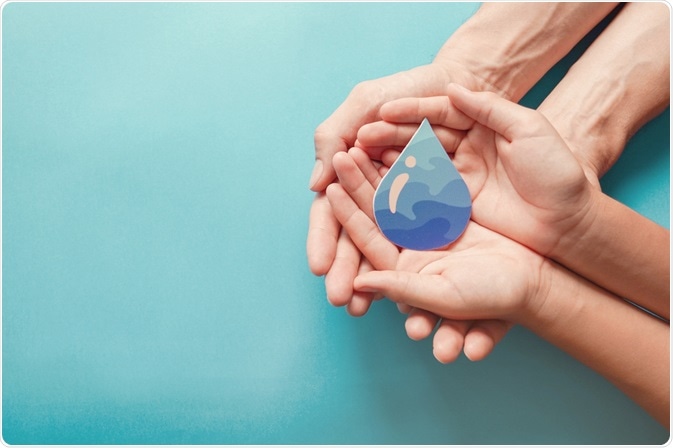Water is essential for the continuation of life on Earth, and safe access to sanitary water is vital for our industrialized society. However, water supplies can become easily contaminated, requiring monitoring and action when they become compromised. This article will discuss the relationship between the fields of microbiology and water security.
Microorganisms Are Cleaning the Water You Drink
The importance of water security
We use water for many reasons, including drinking, bathing, recreational activities, agriculture, and industrial processes. Ensuring that the supply of this essential resource is safe to use is the main concern for governments, industry, and public health bodies both national and international.
Human history is replete with outbreaks of waterborne pathogens leading to epidemics that have killed millions over the course of the centuries. Common waterborne pathogens include cholera, typhoid fever, species of vibrio bacterium that cause gastroenteritis, shigellosis, and E Coli (which causes acute diarrhea and gastroenteritis.)
Even with modern water security, the number of people still dying from preventable water-borne diseases is in the millions, especially in developing nations. According to UNICEF, in 2019 2.2 billion people did not have access to clean drinking water, 4.3 billion did not have access to safe sanitation, and 3 billion did not have access to basic handwashing facilities.
However, between 2000 and 2019, UNICEF reported that 1.8 billion people gained access to safe drinking water, demonstrating that water security has increased for the most vulnerable populations. The field of microbiology has provided vital tools for the improvement of water quality and the monitoring of supplies, helping to detect water-borne pathogens. This in turn has helped inform timely and effective intervention by water companies and governmental agencies.
Microbiology and water treatment: Historical aspects
Before the industrial revolution, many people obtained their water from either wells or rivers. This water was used for everything including drinking, cooking, washing clothes, sanitation, and industry. This meant that there was almost no access to safe water for large swathes of populations, even in the relatively developed nations of Europe and the United States.
Rapid industrialization and the growth of cities in the 18th and 19th centuries led to an urgent need to improve sanitation and water quality. The explosion in concentrated populations led to numerous outbreaks of waterborne diseases such as cholera and typhoid that killed scores of city inhabitants. The sewage systems in these rapidly expanding cities could not cope.
To combat these outbreaks and improve the quality of water supplies for millions of people, companies, and concerned individuals devoted time and energy in producing viable solutions. In the USA, the first sewage treatment works that used chemical methods to treat water was built in 1890 in Worcester, Massachusetts. In Exeter, England, the septic tank was developed by Donald Cameron in 1895, which was an improved version of the cesspool invented in the 1860s by L.H Mouran in France.
A pivotal moment occurred in the United Kingdom around the same time at the Davyhulme treatment works in Manchester, England. Conveyance of human waste and wastewater away from the city via deep sewers linked to the existing sewer system reduced both waterborne microbial contamination as well as the rat populations in the city.
Two microbial-based sewage treatment methods - trickling filter (TF) and activated sludge (AS) - developed at the time are now industry standard. These processes take advantage of anaerobic microbes to break down and eliminate raw sewage before it is discharged into bodies of water such as rivers.

Image Credit: SewCream/Shutterstock.com
Microbiological methods for improving water quality and security
Many microbiological methods have been developed that are used by water companies and government agencies to monitor water quality and improve the security of supplies. New methods are constantly being developed to detect viruses, bacteria, protists, and toxic chemicals which cause fatal contamination if they make it into water supplies.
Some methods include:
- Mussels and other bivalves – These organisms act as highly effective filters of microbial pathogens in ambient water supplies. Mussels, clams, oysters, and other bivalves can clean up to 5 liters of water per hour and provide a low-cost solution to keeping ambient water safe.
- Sample preparation techniques - Due to the risks posed by water-borne pathogens, effective and low-cost methods for concentrating microbes present in large volumes of water for analysis are vital for monitoring water quality. Examples of techniques include hollow-fiber ultrafiltration and NanoCeram filters.
- Saliva-based exposure assays – This technique measures exposure to waterborne pathogens. By taking sample swabs from inside the mouth, scientists can detect antibodies for microbes, improving their knowledge of the links between human health and exposure to pathogens contained in water supplies. This method is cheaper than traditional serological assessments and is less invasive, rapid, and is compatible with high-throughput analysis. Exposure to multiple pathogens can be simultaneously monitored.
Other common applications for microbes in modern water treatment include harnessing methane synthesizing bacteria and archaea to destroy effluent and human waste and using protists to remove cholera and typhoid causing pathogens. Furthermore, microbes are used in environmental protection that mineralizes organic compounds which can then be removed before they enter the environment.
The future
Continued research into microbial treatment processes for water is important for the continued health of industrialized and developing nations. The development of low-cost, efficient systems for effluent treatment and removal will benefit both industry and individuals, and the environment.
Access to safe, treated water will also help reduce global poverty in line with the UN’s Millennium Development Goals. Microbiology will continue to play a huge part in providing safe water well into the future.
References:
Further Reading